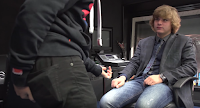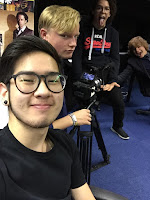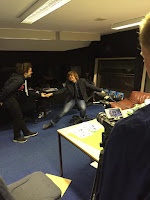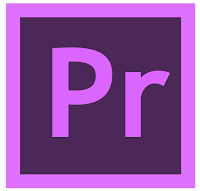 |
| Page 1 of 2 |
During the shoot for our Preliminary Task, which took place in the Hurtwood Editing Suite, we were fortunate enough to use the Sony FS100. In most cases, especially when using a tripod, this camera really worked to my advantage, as I was assigned as the groups cameraman. Its extremely high quality and simple features and use really aided my group during the shoot. However, when we desired a handheld or floor tracking shot, the FS100 definitely dropped in practicality thanks to its weight and awkward shape. When compared to the other cameras on offer, the Canon 5D is far easier to handle off a tripod.
When it came to editing our comical sequence, we were definitely pushed for time, and felt like the process was slightly rushed. This resulted in a relatively quick and rough edit of the project, but thankfully we were able to complete the entire edit, including the added sound effect at the end of the sequence.
 We wanted to follow the original storyboard pretty closely, but then pride ourselves on the flow and natural feel of the scene. This was a challenging task to accomplish, but I believe in the time we were given, we did a decent job. The hardest part of the editing process was figuring out how to structure the final few shots and dialogue. This was critical to the comedic effect of not just the punch line, but the entire scene. In my opinion, the last few shots weren't too obvious or over the top, and paired well with the subtle, yet hilarious punch line.
We wanted to follow the original storyboard pretty closely, but then pride ourselves on the flow and natural feel of the scene. This was a challenging task to accomplish, but I believe in the time we were given, we did a decent job. The hardest part of the editing process was figuring out how to structure the final few shots and dialogue. This was critical to the comedic effect of not just the punch line, but the entire scene. In my opinion, the last few shots weren't too obvious or over the top, and paired well with the subtle, yet hilarious punch line.In conclusion, the task went very well, as our creation was of a high quality in terms of shot variation and creativity, alongside the smooth flow of the edit. However, if there was one thing I could change, it was the quality of the dialogue/audio. As we only had access to a camera microphone (which did the job - as you can understand the dialogue), any movement of the camera had an effect on volume as well as adding noise that minimised the overall clarity. Therefore, I would have liked to use an aerial boom mic throughout the sequence.










